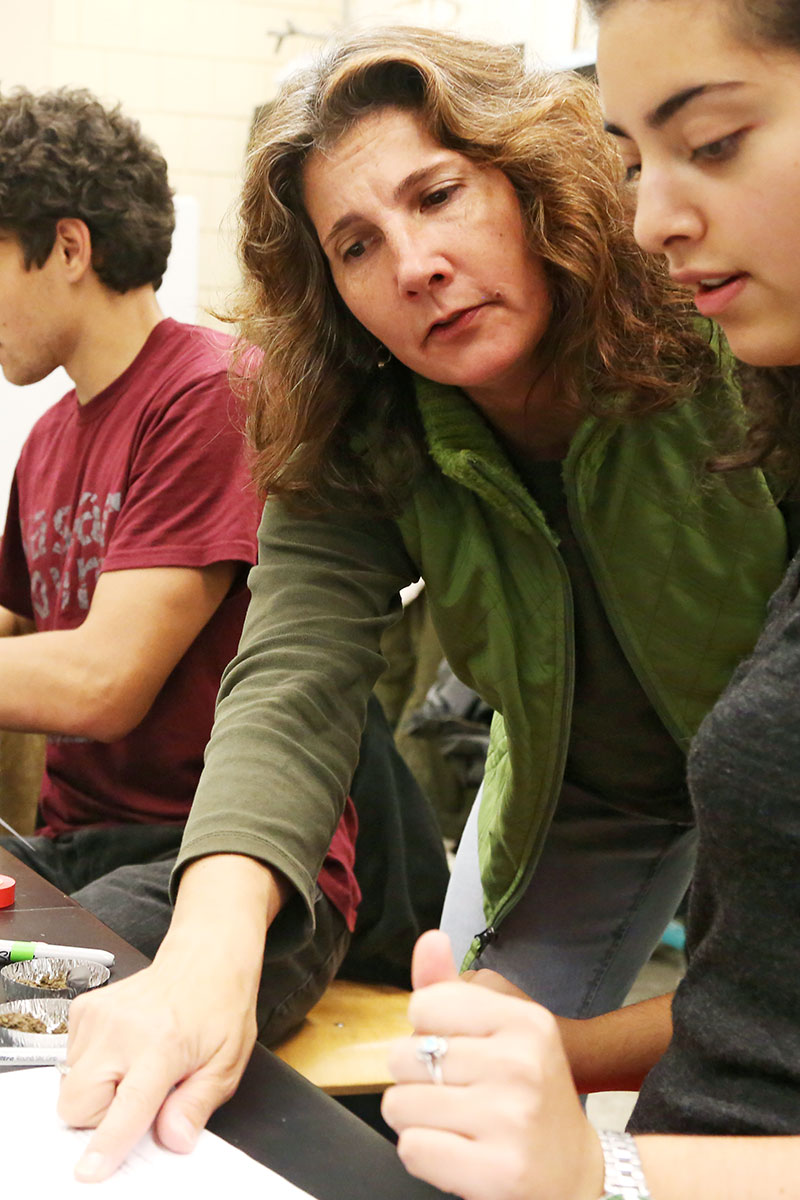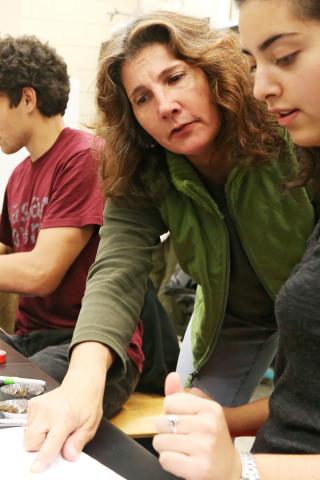Lynn Christenson

As an ecologist, I am interested in understanding the complex relationships between multiple biotic and abiotic factors and feedbacks in ecosystems. This is an important challenge to environmental science researchers—the integration of multiple factors influencing the patterning and processing of ecosystems, particularly under changing disturbance and climatic regimes. I have used a number of approaches to elucidate these relationships in northern temperate forests: I have studied how invasive insect pests (gypsy moths) influence forest nutrient cycling, how atmospheric nitrogen deposition in the Catskill Mountains of New York can influence forest nutrient dynamics and how shifts in winter climate regimes will impact multiple levels of forest community structure and function (including trees, shrubs and moose).
- BSc 1990 University of Winnipeg
- MS 1999 SUNY College of Environmental Science and Forestry
- PhD 2007 SUNY College of Environmental Science and Forestry
Research Interests
As an ecologist, I am interested in understanding the complex relationships between multiple biotic and abiotic factors and feedbacks in ecosystems. This is an important challenge to environmental science researchers—the integration of multiple factors influencing the patterning and processing of ecosystems, particularly under changing disturbance and climatic regimes. I have used a number of approaches to elucidate these relationships in northern temperate forests: I have studied how invasive insect pests (gypsy moths) influence forest nutrient cycling, how atmospheric nitrogen deposition in the Catskill Mountains of New York can influence forest nutrient dynamics and how shifts in winter climate regimes will impact multiple levels of forest community structure and function (including trees, shrubs and moose).
In a broader ecological context, I am working towards better understanding the role that biodiversity plays in structuring the soil and stabilizing soil fertility as well as structuring forest communities. This work is very collaborative in nature, bringing together colleagues from a number of institutes/organizations, including the Cary Institute of Ecosystem Studies in Millbrook NY, the Hubbard Brook Experimental Forest in Campton NH, the University of Vermont: Rubenstein School of Environment and Natural Resources and Vassar College.
Teaching Interests
I teach Introduction to Biological Investigation (Biol 106), Ecology (Biol 241) and Topics in Ecosystem Ecology (Biol 381b).
I also have teaching interests in the Environmental Studies Program (Biogeochemistry, Global Change, and Essentials of Environmental Science). I welcome students who would like to do independent research or senior research associated with environmental science and ecology.
Research and Academic Interests
Biogeochemistry
Departments and Programs
Courses
BIOL 241 Ecology
Selected Publications
- Lovett, G.M., Hart, J.E., Christenson, L.M., and Jones, C.G. “Caterpillar guts and ammonia volatilization: retention of nitrogen by gypsy moth larvae consuming oak foliage.” Oecologia. 117:513-516 (1998)
- Christenson, L.M., Lovett, G.M., Mitchell, M.J. and Groffman, P.M. “The fate of nitrogen in gypsy moth frass deposited to an oak forest floor.” Oecologia. 131:444-452 (2002)
- Lovett, G.M., Christenson, L.M., Groffman, P.M, Jones, C.G., Hart, J.E. and Mitchell, M.J. “Insect defoliation and nitrogen cycling in forests.” Bioscience. 52(4) 335-341 (2002)
- Fitzhugh, R., Christenson, L.M., and Lovett, G.M. “The fate of 15NO2- tracer in soils under different tree species of the Catskill Mountains, New York.” Soil Science Society America Journal. 67:1257-1265 (2003)
- Campbell, J.L., Mitchell, M.J., Groffman, P.M., Christenson, L.M., and Hardy, J.P. “Winter in northeastern North America: a critical period for ecological processes.” Frontiers in Ecology and the Environment. 3(6): 314-322 (2005)
- Campbell, J.L., Mitchell, M.J., Mayer, B., Groffman, P.M., Christenson, L.M. “Mobility of 15N-labeled nitrate and 34S-labeled sulfate applied to snow at the Hubbard Brook Experimental Forest, New Hampshire.” Soil Science Society of America Journal. 71:1934-1944 (2007)
- Christenson, L.M., Lovett, G.M., Weathers, K., Arthur, M. “The influence of tree species, nitrogen fertilization and soil C:N Ratio on gross soil nitrogen transformations.” Soil Science Society of America Journal. 73(2): 638-646 (2009)
- Rodenhouse, Nicholas L., Lynn M. Christenson, Dylan Parry, Linda E. Green. “Climate change effects on native fauna of Northeastern forests.” Canadian Journal of Forestry Research. 39:249-263 (2009)
- Christenson, L.M., Mitchell, M.J., Groffman, P.M. and Lovett, G.M. “Winter climate change implications for decomposition in Northeastern forests: comparisons of sugar maple litter to herbivore fecal inputs.” Global Change Biology. 16(9): 2589-2601 (2010)
- Pouyat, R.V., Weathers, K.C., Haeuber, R., Goldston, Lovett, G., Christenson, L., Findlay, S., Gropp, R., Lymn, N., Menninger, H. and Rosi-Marshall, E. “The role and challenge of federal agencies in the application of scientific knowledge: Acid deposition policy and forest management as examples.” Frontiers in Ecology and the Environment. 6(8): 322-328 (2010)
Grants, Fellowships, Honors, Awards
Lynn Christenson is Co-PI on New NSF Conference Grant
Lynn Christenson, Associate Professor of Biology, received a National Science Foundation award with her collaborators from George Mason University and USDA Forest Service, to support a workshop related to “Forest biodiversity responses to changing climate across the Americas: Synthesis of long-term ecological data.”
